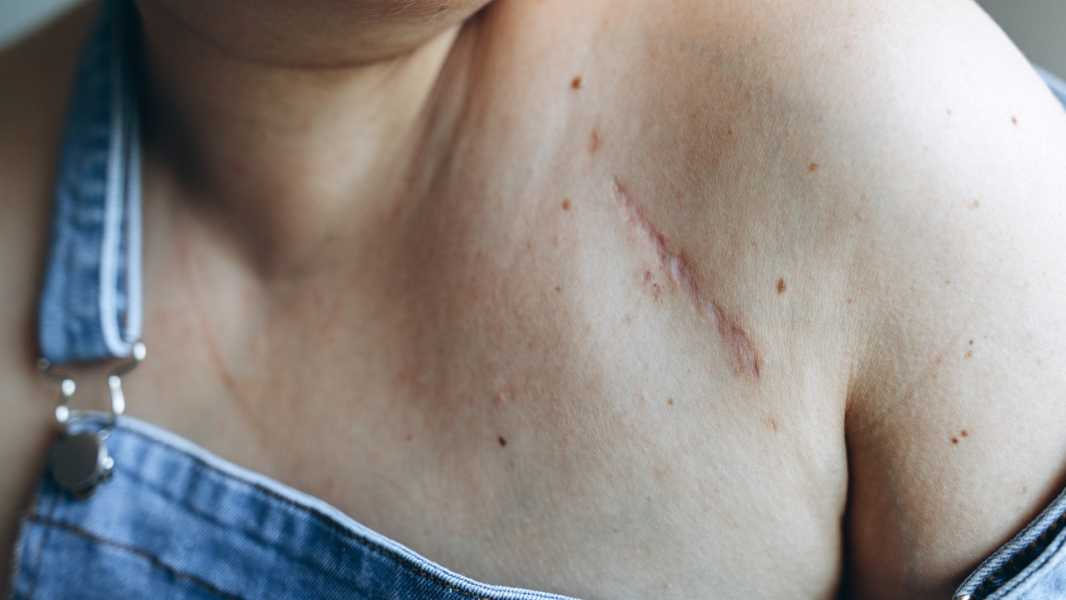
Scars are made up of random bundles of a fibrous protein known as collagen, which forms in the skin when the body tries to repair itself after an injury. (Image credit: Lilia Kruger via Getty Images)
Scars come in a variety of shapes, sizes and colours and are the result of the skin's natural healing process following damage caused by surgery, infection, injury or rapid growth.
Scars play a key role: they help the body replace lost or damaged tissue. But what are scars made of? And why do they last forever?
To answer these questions, it is important to first understand what a scar is.
The skin is made up of three main layers. The topmost layer of the skin, called the epidermis, is the thinnest. It is made up of layers of flat cells known as epithelial cells, which together function to protect the body from external influences.
Beneath the epidermis is the dermis, the thickest layer of skin, which contains nerves, blood vessels, hair follicles, and sweat and sebaceous glands. Also within the dermis is an extensive network of protein fibers called collagen and elastin, which play a role in maintaining the skin’s structure and elasticity. Finally, the hypodermis is the deepest layer of skin. It contains fatty tissue that insulates the body, cushions internal organs, and protects tissues from injury.
If the injury is just the epidermis—as with most sunburns—this outer layer of skin simply peels away, leaving the deeper layers of skin intact. However, if the injury extends deeper into the dermis, the body needs to repair the damaged tissue. A scab forms to close the wound, and then inflammation triggers the healing process. The skin then begins to repair the tissue inside the wound, and it is the haphazard way it does this that results in a scar.
In normal skin, the network of collagen fibers in the dermis resembles a piece of fabric that’s carefully woven into a beautiful, smooth pattern, explained Dr. Damon Cooney, an associate professor of plastic and reconstructive surgery at Johns Hopkins Medical Center. When an injury destroys this tissue, the body begins producing new collagen fibers to fill in the gaps.
However, instead of neatly weaving new fibers back into the wound, the body dumps them in a haphazard pile, Cooney noted. This disorganized accumulation of collagen makes up the bulk of scar tissue, making it less like normal skin and less elastic.
Scar tissue also differs from healthy skin in that it lacks hair follicles and sweat glands. In people with fair skin, the scar may initially appear pink or red, but over time this color fades and the scar becomes slightly lighter or darker than the normal skin color. Scars in people with dark skin often appear as dark spots.
In some cases, the body continues to accumulate collagen in the scar tissue longer than normal, resulting in what is called a keloid or hypertrophic scar. These scars are thicker, raised, and may be red, pink, or purple, or just slightly darker than a person’s normal skin tone. Keloid scars are larger than the original wound, while hypertrophic scars are proportional to the size of the original wound.
Teenagers and pregnant women are more likely to develop hypertrophic scars than other groups, possibly due to hormonal changes that increase inflammation in the body. Keloid scars are more common in people with darker skin tones, likely due to genetic risk factors.
Sourse: www.livescience.com





